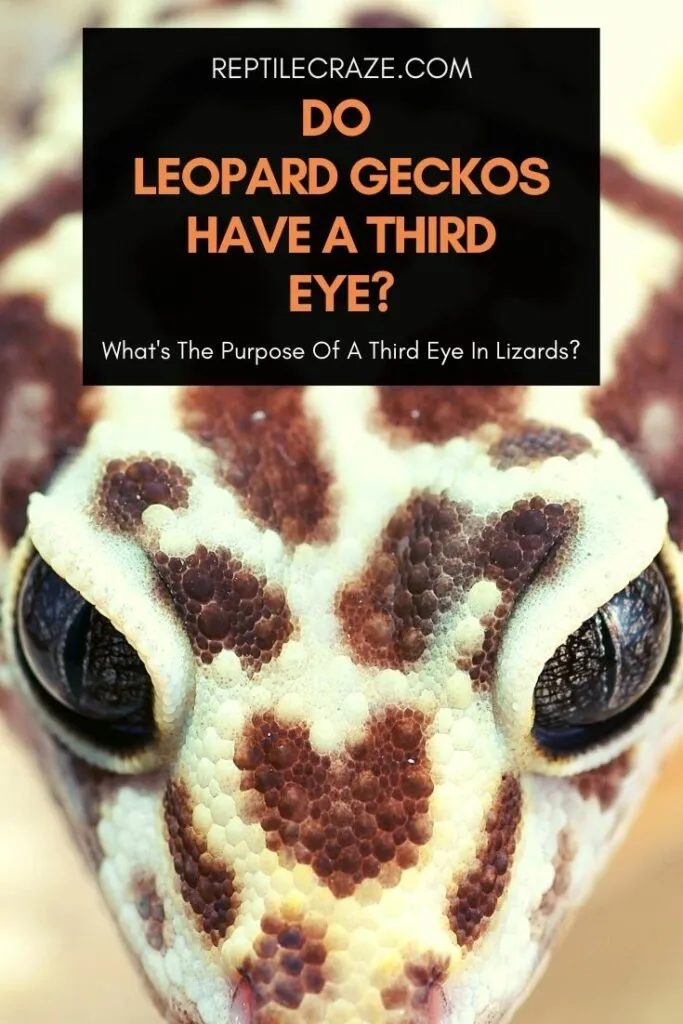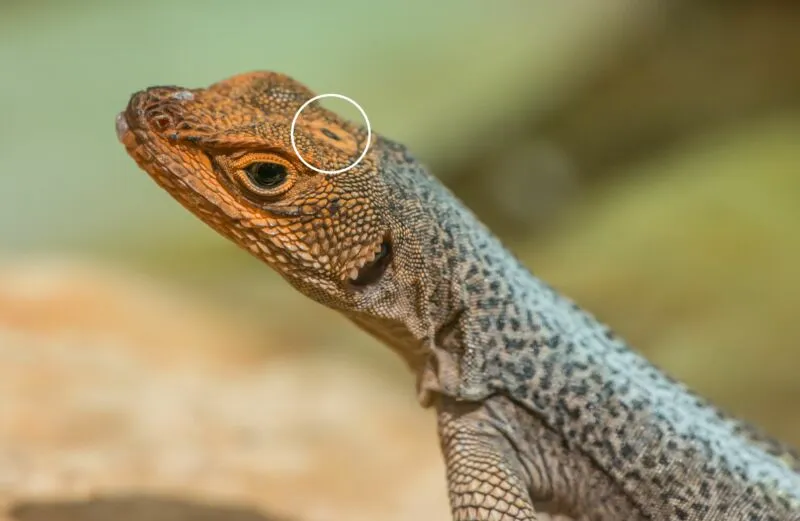
Well, hold on! Before you speculate on your leopard gecko having psychic abilities, we are actually talking about a literal third eye. So sorry for getting your hopes up as to your leo predicting your love life or career. But! In the event that your leo has a third eye, that is also pretty cool, right?
Leopard geckos do not have a third eye or parietal eye. This organ is mostly found in diurnal species as it helps with thermoregulation and the circadian rhythm. Leopard geckos are crepuscular lizards thus they do not have this organ. They can thermoregulate without the help of the parietal eye.
Why is it that leopard geckos do not have a third eye? Can they really survive and thrive without this organ? All this and more will be discussed in this reading. So what are you waiting for? Read on!
Leopard Geckos Don’t Have A Third Eye – Here’s Why!
The simple answer is that leopard geckos are crepuscular lizards. This means that they are mainly active during the late-night up to the wee hours of the morning. The lizards that have the third eye are the diurnal types, the ones who are active during the day.
Diurnal lizards rely heavily on external sources such as lighting and heating to regulate hormone levels. Thus, they need a third eye to signal them to bask or to hide from the UV rays.
Crepuscular lizards only need proper lighting and heating to regulate bodily processes. They only do pseudo-basking behavior based on the current condition of their body.
As you might have realized, leopard geckos do not rely as much on the sun to gather energy as other lizards. Of course, this does not necessarily mean that they can do away with the sun. But as compared to diurnal lizards, they can survive without basking under natural or artificial light.

Even without the parietal eye, their bodies will dictate when they need to go to the warm and cool areas of the enclosure.
When they need help in digesting and do not have enough energy for it, they will simply go to the warmer area or pseudo-bask under the lights. The same goes for when they go to cooler areas to conserve energy and rest.
So What Is A Lizard’s Third Eye?
The parietal eye or most commonly known as the third eye is an organ that is found in some lizards. What is most interesting is that this eye is connected to the pineal gland. This gland is in charge of producing hormones but generally, it produces melatonin which helps with sleep.
This gland is really special in the sense that we humans, also have this gland. What is surprising is the fact that there are still not a lot of studies surrounding this gland that can give us more information about how it affects our body in as much as it affects the lizards that have a parietal eye.
What It Looks Like
You will usually find the parietal eye at the top of the head of a lizard and it is smack at the center. For most third eyes, they are grey in color. For a highly pigmented lizard, their parietal eyes can be just a lighter shade of their dominant color.

When you look closely, you can see that this third eye also has a lens. However, for other lizards, you can clearly see that their third eye is similar to the look of a regular eye. A good example is that of the lizard in the image below.

In general, the third eye just looks like a retina and does not have the main components of a regular eye.
What Is The Purpose Of A Third Eye In Lizards?
Unlike the other two eyes, the parietal eyes do not actually provide sight. On the other hand, it can detect shadows and shapes compared to getting a full image of perfect sight.
Further, this third eye is very sensitive to light. Its main purpose is to produce different hormones throughout the day. According to studies, the hormones that are secreted can also reverse the reaction to the body based on how long or how often the lizard is exposed to UV rays.
We mentioned earlier that it also produces melatonin that helps with the circadian rhythm of lizards. There was a study conducted by researchers wherein they remove and covered the parietal eye of certain lizards. They found out that the lizards are more active for a longer period.
Therefore, the parietal eye has a lot to do with resting behavior. It also has a connection with basking behavior. As a lot of you know, lizards should conserve their energy.
The more they move, the more energy they use up. In order to gain energy, they can bask under the sun and also eat. But even in eating, they expand energy in the form of digestion.
Simply put, the main purpose of the parietal eye can dictate when the lizard should rest, sleep, and go out in the sun. There are also other purposes of the third eye based on experiments and these are the following:
- It has also something to do with the fight or flight response. During experiments, the lizards that had their parietal eyes covered were not easily scared or startled. It is only upon the presentation of an actual threat, do they react.
- It can also be used to navigate their surroundings. In the experiment, the lizards that had their third eyes covered were not able to navigate easily through a maze.
Conclusion
Leopard geckos do not have a third eye or parietal eyes because they are crepuscular lizards that do not solely rely on the sun on their survival. Diurnal lizards are the ones that need to have a third eye for a proper day and night cycle as well as the ample secretion of much-needed hormones.
Now, in the case of our leopard geckos having a figurative third eye aka being psychics… Well, there still has been no research done on that nor do we think there will ever be one (given the fact that it’s impossible). Wishful thinking, everyone!
- Enchi Ball Python: A Unique and Stunning Morph of Python regius - March 27, 2025
- Emerald Tree Monitor: The Enigmatic Green Guardian of the Rainforest - March 26, 2025
- The Egyptian Cobra (Naja haje): A Fascinating Serpent - March 25, 2025
